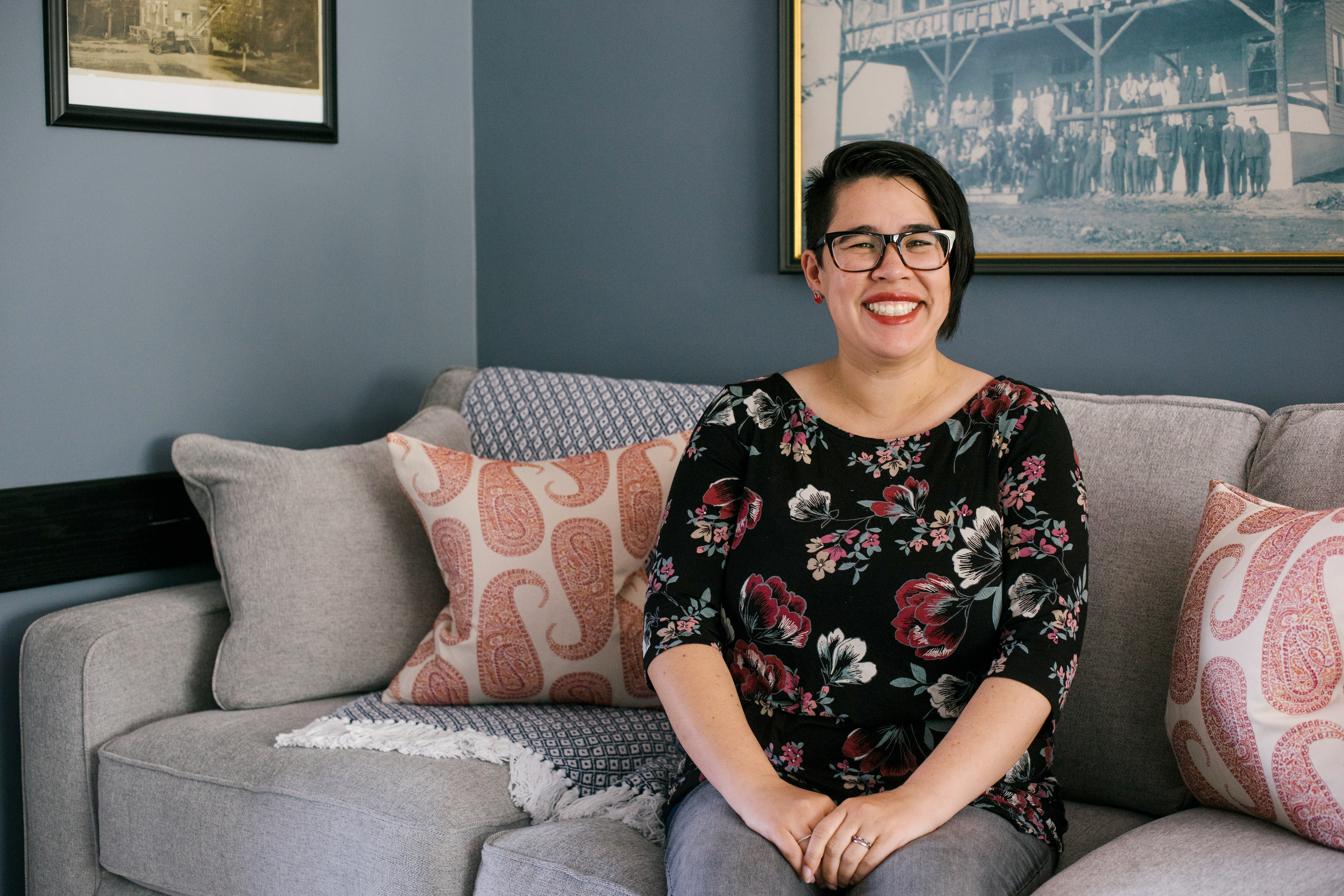Preserving the Past for the Future: Archivist Curates JBU's Story
By Caroline White '21
May 31, 2019

When Marikit Schwartz Fain accepted a work-study position in University Archives during her senior year at JBU, she never dreamed she would later oversee the vast collection of writings, photographs, videos and other physical objects that represent the university’s 100-year history.
Schwartz Fain intended to work in ministry, earning a degree in child and family studies. After graduating in 2005, she worked at a daycare for almost three years. Though she enjoyed her work, Schwartz Fain wanted to be involved with JBU and continued to apply for open positions.
In 2008, JBU began looking for a new archivist, and Schwartz Fain interviewed for the position despite her minimal experience.
“Thankfully, Mary Habermas, the library director at that time, was willing to take a chance on me and invested in helping me learn the job,” Schwartz Fain said.
Managing the university archives can be something like trying to captain a ship without a single crew member for assistance.
“I almost quit at the end of my first year,” Schwartz Fain recalled. “I loved what I was doing, but I was completely overwhelmed.”
At larger institutions, a team of employees—a preservationist, historian, outreach director, restorationist, and more—works together to run the archives; at a smaller university like JBU, one archivist fills all of those positions.
With so much to learn, Schwartz Fain says it took about three years to find her sea legs. She attended archives training programs and relied on a network of archivists across the country for help in preserving sensitive materials like old film, which can spontaneously combust after a few decades of decomposition.
“My greatest takeaway from training was that an archives office needs a clear mission statement and collection policy,” Schwartz Fain explained. “The archives can’t just be a place to put cool stuff, because the larger the collection grows, the more difficult it becomes to truly care for everything. We have to narrow our focus so that we can better preserve all our materials.”
In her role, Schwartz Fain directs the collection and care of historical university resources, including publications like yearbooks and the Threefold Advocate, audio and video cassettes, artifacts from the various Brown schools and academies, and photos, memorabilia and books about local and regional history or the history of the university.
She fields requests from university departments, usually seeking photos or checking facts for publication, and she also responds to people outside the university who contact her looking for information about local history or family members connected with JBU.
“An archive allows people to look back,” Schwartz Fain said. “Because it’s an objective picture, it allows you to see the context—the broader picture of an era. It helps to inform where the school is going when you know where it’s been, the principles it was founded on.”
For example, when JBU recently redesigned the core curriculum, administrators sought out information on previous curriculum revisions to get an idea of how the current curriculum came to be.
University Archives owes much of its information to the legacy of May Boudinot, the university’s first historian. Boudinot came to JBU in 1921 to teach history and work in the library.
Once she arrived on campus, Boudinot began keeping meticulous records of university events, a practice she continued over the course of her 30-plus years associated with JBU.
During World War II, she began chronicling the names, locations and fates of those associated with the John Brown Schools. Her pages of the monthly John Brown University Bulletin were rich with details, updates on service members abroad and reports on friends lost in the war.
Boudinot’s work as JBU’s unofficial diarist culminated in two manuscripts detailing the history of John Brown University and John Brown himself, called “The First Fifteen Years of John Brown Schools” and “The Magnetic Power of Dreams,” respectively.
She retired in 1953 at the age of 74 but continued to make pencil notes in the margins of her work, logging special banquets, commencement activities and campus changes.
Boudinot’s efforts to preserve the knowledge of JBU’s early history have been invaluable to archivists in later years, and Schwartz Fain regularly consults Boudinot’s manuscripts for information, particularly as JBU looks back to its founding in this centennial year.
Last summer, university archives moved to a new location off Holly Street, the house where JBU presidents lived from 1952 to 2006. One of Schwartz Fain’s new tasks is restructuring the archives to take advantage of the building space, which provides a much-needed public face for the collection.
Because she shares the space with the JBU Office of Alumni and Parent Relations, she often gives tours to visiting alumni, and she continues to connect with JBU students during the freshman Gateway Seminar’s annual trips to the archives.
Leading these tours over the years, Schwartz Fain has run up against a variety of common misconceptions about her position. The idea she sees most often is that University Archives works to shape history, that its main purpose is collecting and preserving relics from JBU’s past.
“Actually,” Schwartz Fain explained, “my job is the opposite. I don’t work to shape history, I work to preserve it as objectively as possible. What I do have is the opportunity to shape the future, helping to direct the forward movement of JBU by reminding people of the why behind the history of the university.”
As JBU celebrates its 100th year, Schwartz Fain has been more active than ever, seeking out resources and memories from JBU’s past to share with the students and administrators of the future.
If you have items you think would be of value to JBU, email archives@jbu.edu.

